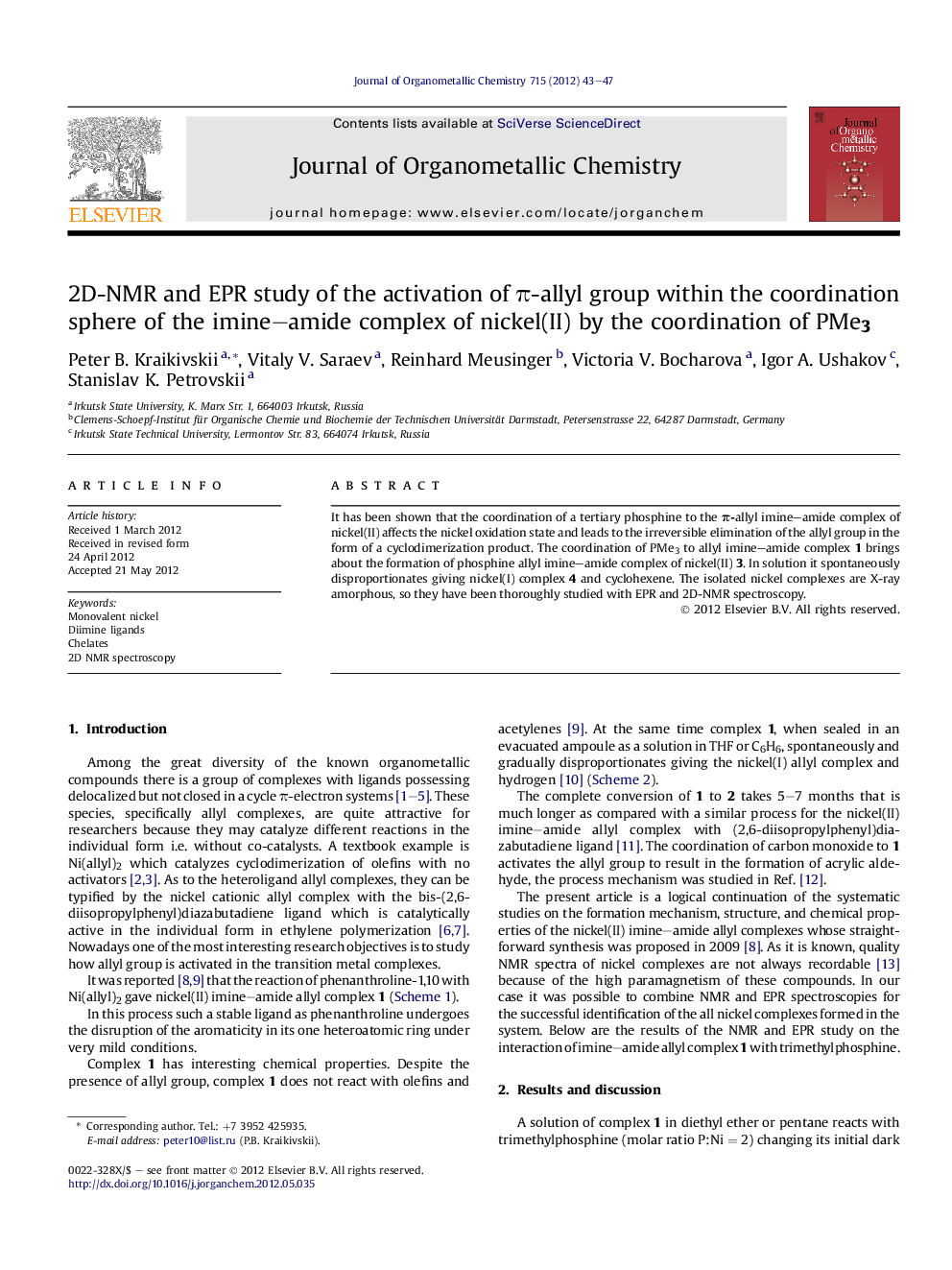| Article ID | Journal | Published Year | Pages | File Type |
|---|---|---|---|---|
| 1324035 | Journal of Organometallic Chemistry | 2012 | 5 Pages |
It has been shown that the coordination of a tertiary phosphine to the π-allyl imine–amide complex of nickel(II) affects the nickel oxidation state and leads to the irreversible elimination of the allyl group in the form of a cyclodimerization product. The coordination of PMe3 to allyl imine–amide complex 1 brings about the formation of phosphine allyl imine–amide complex of nickel(II) 3. In solution it spontaneously disproportionates giving nickel(I) complex 4 and cyclohexene. The isolated nickel complexes are X-ray amorphous, so they have been thoroughly studied with EPR and 2D-NMR spectroscopy.
Graphical abstractIt has been shown that during the coordination of a tertiary phosphine the π-allyl imine–amide complex of nickel(II) undergoes significant transformations such as the change in the nickel oxidation state and irreversible elimination of the allyl group in the form of a cyclodimerization product.Figure optionsDownload full-size imageDownload as PowerPoint slideHighlights► Stable π-allyl complex. ► Coordination of PMe3. ► Transition of π-allyl complex to σ-allyl complex of Ni+2. ► Spontaneous transition of Ni+2 complex to Ni+1 one. ► Ni+1 is the final form of nickel in the system.
